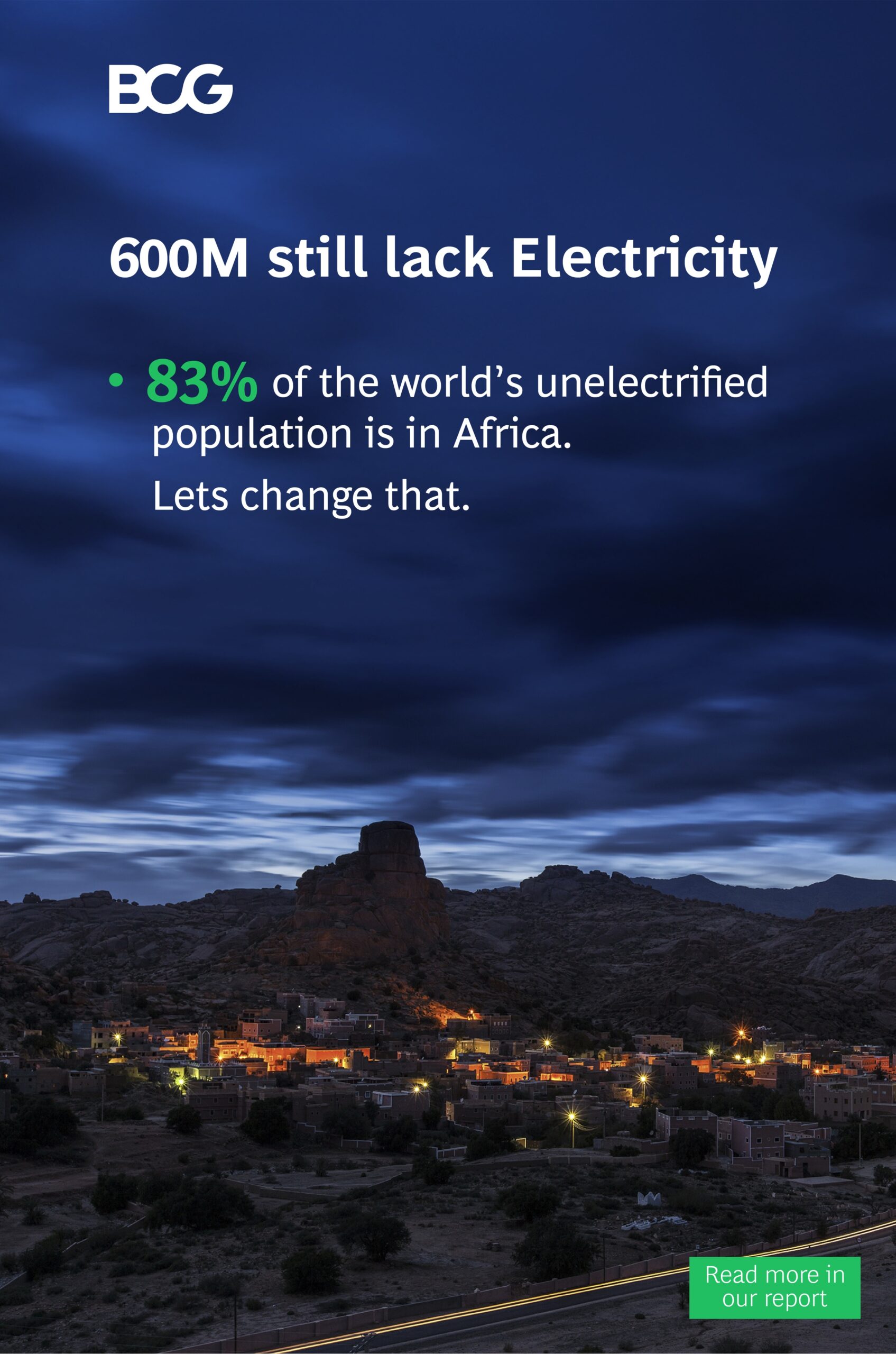
Challenges, and Opportunities in SA’s Power Market Reform
By Kesh Mudaly and Adwoa Banful – BCG South Africa Power Sector Experts
Q1: What does power market reform entail for South Africa, and what are the main goals? (KESH)
Market reform in South Africa involves a fundamental restructuring of the power sector to improve efficiency, reliability, and competition. At its core, reform includes transitioning away from a vertically integrated utility model towards a more open and decentralized system—with separate entities for generation, transmission, and distribution—and the establishment of a competitive wholesale electricity market, including a day-ahead market structure.
If successfully executed, this transformation could unlock one of the largest infrastructure investment mobilisations in South Africa’s recent history—in excess of R1.5 trillion. This includes significant build-out in Renewable Energy (wind and solar), Battery Energy Storage Systems (BESS), Gas-to-Power capacity, and major transmission infrastructure. For example, the Transmission Development Plan alone calls for approximately 14,000 km of new lines and 170 substations, requiring around R390 billion in investment.

Crucially, market reform is not just about energy supply—it is a lever to solve South Africa’s Energy Quadrilemma: balancing energy security, affordability, environmental sustainability, and socioeconomic challenges. When well-designed, these reforms can deliver improved reliability, more competitive pricing for consumers, and long-term savings for the economy. They also open the door to industrial policy opportunities—fostering local green value chains, driving job creation, and supporting economic transformation. In this sense, power sector reform is a strategic enabler of broader national priorities: reducing unemployment, alleviating poverty, and closing the inequality gap.
Q2: What are the key enablers required to ensure market reform achieves its stated goals? (KESH)
Delivering on South Africa’s power market reform agenda will depend on a few practical enablers: clear and consistent regulation, well-capacitated institutions, and coordinated action across government, industry, labour, and civil society. These elements cannot operate in isolation—fragmentation will stall progress.
One of the most immediate opportunities that reform unlocks is the development of green and low-carbon value chains. But realising this potential requires more than ambition—it needs predictable and sustained policy signals to give investors the confidence to commit to long-term capital formation. Without this, we risk losing momentum and relying heavily on imported technologies, missing the chance to build local capacity and jobs.
Equally important is adopting a phased and strategic approach to localisation—focusing on parts of the value chain where South Africa has a clear comparative advantage or ‘right to win’. With the right policies, planning, and public-private partnerships, the country can not only improve energy security but also meaningfully address unemployment and industrial revitalisation.
Q3: What are the main signposts to watch out for that could shape how market reform plays out? (KESH)
Market reform progress will be informed by key leading and lagging indicators that will shape the trajectory and success of the reforms. Leading indicators include critical regulatory and institutional milestones such as:
- The operational effectiveness and independence of the newly established National Transmission Company (NTCSA) and the new Market Operator (MO).
- Successful implementation of the Electricity Regulation Amendment (ERA), including the introduction of an optional wholesale market, a phased transition from regulated tariffs to market-based pricing, and clear guidelines on vesting contracts that enable Eskom’s generation capacity to progressively participate in competitive market structures.
- Policy alignment and clarity from regulatory bodies (NERSA and NTCSA), particularly regarding grid access rules and transmission tariff frameworks, to incentivize investments in new renewable and flexible generation capacity.
Lagging indicators will reflect the tangible outcomes of reforms, such as:
- The mobilisation of private finance, demonstrating increased investor confidence in market structures and stability.
- Progress in grid development, as evidenced by achieving annual targets to expand the transmission network (moving from the current ~300 km/year towards a target of ~2,000 km/year).
- The scale and pace at which new private generation capacity connects to the grid, indicating successful coordination among market players.
- Managing the transition at the right pace and with appropriate guardrails is crucial. Specific risks to mitigate during this period include:
- Balancing localisation and pace of development: Incentivising green and low-carbon value chains without creating unintended bottlenecks from over-reliance on immature or underdeveloped local supply chains.
- Ensuring system reliability through fair compensation: Putting in place robust mechanisms to fairly compensate capacity and ancillary services, which are critical to maintaining grid stability as the system becomes more variable.
- Managing price volatility and consumer impact: Designing the market to limit excessive price swings and protect affordability—especially during the early phases of liberalisation—to avoid undermining public trust and economic resilience.
Q4: How could South Africa’s power market reforms contribute to broader socio-economic development? (ADWOA)

Market reform goes beyond the energy system and can catalyse transformational, much-needed socio-economic change.
The energy transition is bringing projects across rooftop solar, utility-scale installations, battery storage, and other low-carbon generation sources online. These will create direct, indirect, and induced jobs, extending economic opportunities well beyond the immediate technical roles involved.
With increasingly stringent low-carbon and green mandates in markets like Europe and the UK, sectors such as e-fuels, battery manufacturing, and other low-carbon industrial and non-industrial opportunities (such as green tourism) will grow rapidly. These offer additional jobs and revenue, which are much needed to tackle the unemployment and low growth challenges currently facing the country.
Then, of course, there is the benefit that cheaper power (the cost of new renewable and low-carbon generation is typically 20-30% cheaper than coal) will offer households and businesses; critical cost savings that enhance the competitiveness of locally consumed and exported goods and services, setting a virtuous cycle in motion.
While South Africa has clear advantages and the right-to-win in these sectors, a reliable and affordable power system is essential to unlock the country’s ability to fully engage in these broader green and low-carbon value chains, but also to protect continued access to extant trade opportunities.
Market reform is a critical path step to being able to stand up and operate the kind of reliable, affordable, and low-carbon power system quickly enough for South Africa to create or maintain an edge over other economies, to fully capitalize on these opportunities. The term market reform, then, is apt given the transformational potential at stake.
Q5: Considering ongoing supply chain constraints globally, how can the South African industry capitalize on opportunities within clean energy supply chains? (ADWOA)
Clean energy supply chains globally are under pressure and are re-organizing in response to concentration & geopolitical risks, input bottlenecks, costs, and infrastructure constraints. This situation offers strategic opportunities for South Africa in areas where it has strong competitive advantages – significant natural resources, cost-competitive labor, and existing technological know-how – to meet the needs of multinational buyers who are seeking new, cost-effective and politically stable sourcing partners. Critically, this is only possible where our competitive advantages in South Africa yield a very attractive business case on a per unit basis. Many such opportunities exist – in Wind, Rare Earth Element processing; and especially in the e-fuels space where South Africa has proven its right to play in the e-methanol, Sustainable Aviation Fuel (SAF) and other Renewable Fuels of Non-Biological Origin (RFNBOs) spaces.
There are a few things South African industry can do to capitalize on these opportunities:
- First, demonstrate cost competitiveness and track record to secure offtake contracts. Business cases have always been king but are now more so in an increasingly cost-constrained global environment, and articulating the clear cost advantages we have over other providers can strengthen the case for procuring from South African players;
- Secondly, demonstrate compliance with leading standards is important. While there is a growing and relatively complex landscape of standards, prioritizing meeting standards in key offtake markets (for example, the EU) will be critical.
It will also be essential to advocate for outcome-based approaches to regulation to help to avoid needing multiple costly certifications given the complex standards landscape, as it is also important to advocate for phased compliance approaches which allows offtake for emerging market-based suppliers who may not yet have achieved full standard compliance, by linking offtake milestones to specific and progressive compliance achievement milestones. - Thirdly, move quickly. In the e-fuels space for example, recent blending mandates are driving material demand for Sustainable Aviation Fuel (SAF); this is the time to work on securing offtake agreements with large buyers.
Q6: From a labor market perspective, how can South Africa effectively address existing skills and resource gaps to support its energy transition? (ADWOA)
The JET is a massive opportunity for job creation, with current project pipelines poised to create 120-200K jobs by 2030 and up to 600k by 2050. 30-50% of these roles will require semi-skilled to highly-skilled workers. We know the needs now to a very granular level of detail – by project, job type, skill level, location and timing – but we simply cannot massively scale up training for in-demand job families to meet demand. This is because demand is evolving continuously and at a pace that makes the static, multi-year plans of yester-year dead on arrival. To meet these needs, the current skills system needs to transition into an integrated, inclusive and adaptive ecosystem that can skill at scale (at least 10k p.a.), which quickly responds to industry needs to ensure workers have the skills employers require, which provides training that is demand-led and therefore can be matched to concrete job opportunities, which brings training to communities, and leaves no one behind. This vision is big, but it is possible. To unlock it will require five strategic paradigm shifts. First, skills planning must start from project pipeline data and be refreshed frequently, at least annually; private sector needs to actively participate in skills planning, training delivering and resource sharing; all funding on JET skilling needs to be aligned with a clear set of national priorities defined by an ecosystem coordinator to ensure spend efficiency and avoid gluts in some areas and gaps in others; training needs to become learner-centric, and we need to deploy tailored approaches to address barriers facing diverse learner groups; and jet skilling must be powered by a technological backbone in order to deliver the quality of training at the speed, scale and level of responsiveness required across the wider ecosystem.
















